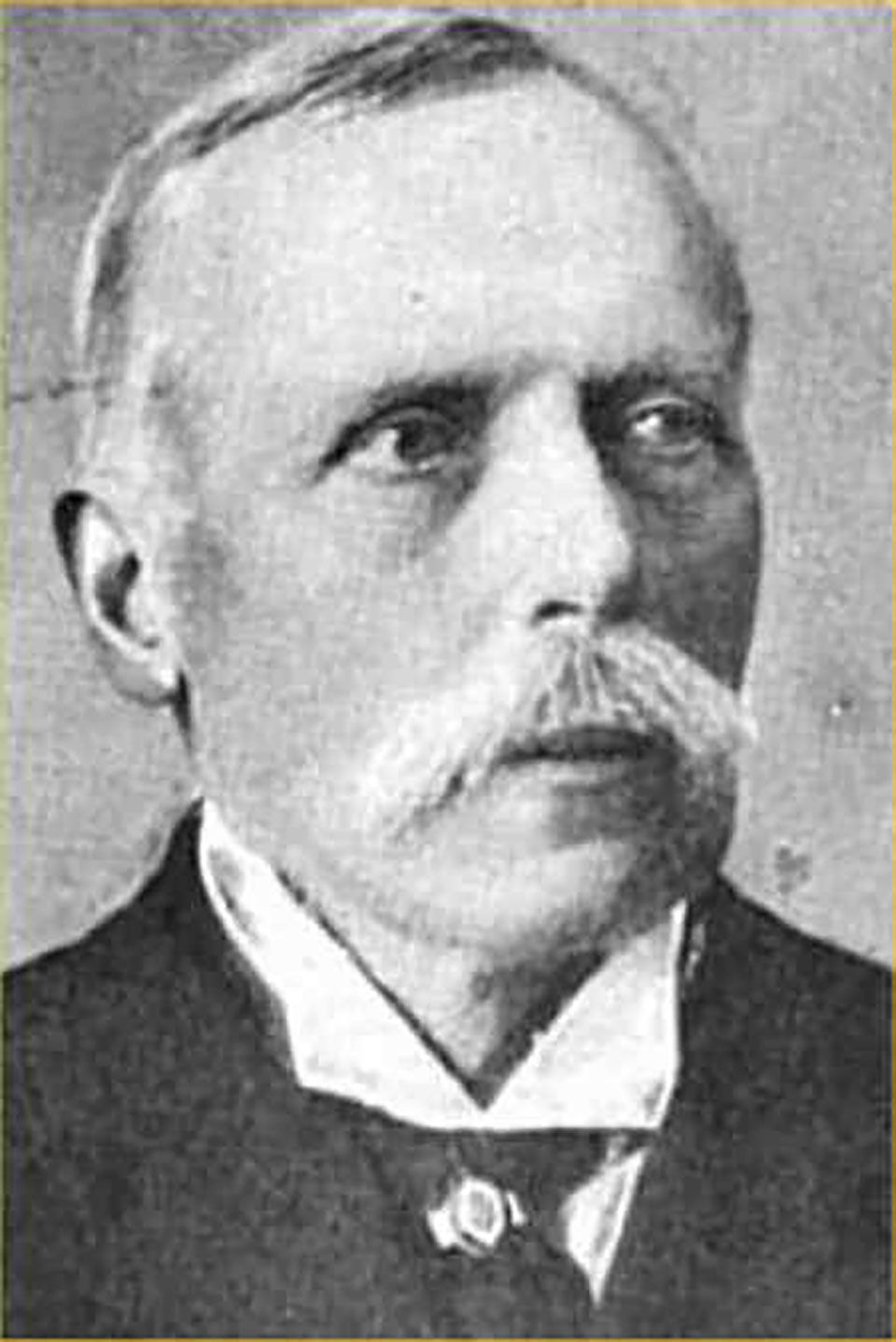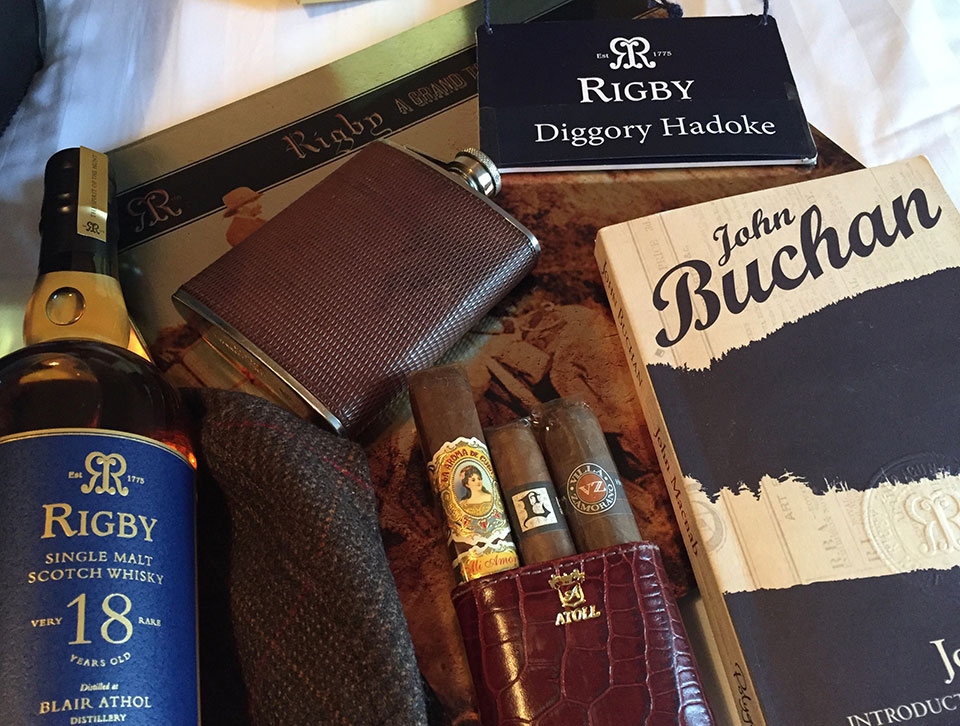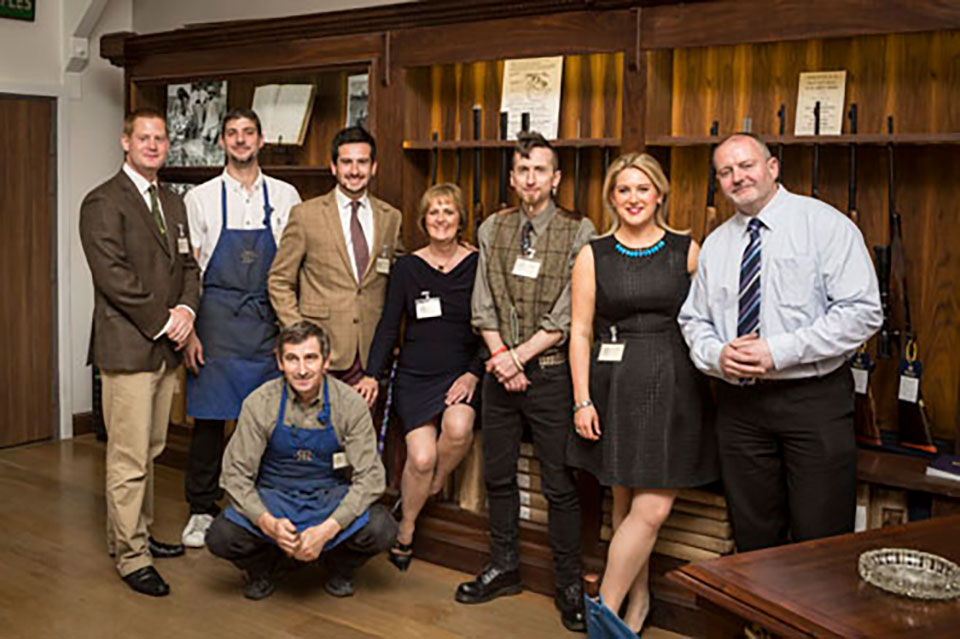It all started in Dublin back in the late 18th century.
The firm has settled on 1775 as the founding year of the original company, by the first John Rigby, to carry out business styled as such. Certainly, by 1781, the founder was building a range of sporting guns and rifles under his own name.
The founder died, aged 60, when the flintlock was still king, but his sons, William and John, carried the firm through the next 45 years, rode the frenzy of invention that saw the gun trade embark on what would prove to be a century of frenetic development.
While in Dublin, the firm specialised in barrel making, and furnished clients with a full range of sporting guns and rifles; even duelling pistols, pocket pistols and other such things for personal protection at a time when your life and possessions were very much at risk when travelling the unlit highways and byways after dark.
William Rigby improved rifling with a machine that cut perfectly cylindrical bores with rifling of uniform depth. In 1851, Rigby showcased their wares at the Great Exhibition in London’s Crystal Palace and, again, in 1855, at France’s version, in Paris, winning awards at both events.
The era of the second John Rigby and his brother, William, came to an end when William’s son, John, took the reins in 1858, upon his father’s death. John Rigby III was an educated man, with a degree from Dublin’s great university, Trinity College. He was the proprietor who took Rigby from Dublin to London.
In 1865, he opened a store in St James’s Street, which was evidently successful enough for the firm to move there in its entirety in the 1890s, at which time he sold the Dublin premises to another gunmaker; Trulock & Harris.
John Rigby III was a serious figure in firearms development, even in his twenties. For example, creating the brass cartridge that would become the .577 Snider military round.
For most of the mid-19th century, the match rifle of choice was the Rigby .451 calibre muzzle-loader. John Rigby himself was a very successful competitor and won the prestigious Wimbledon Cup several times and represented Ireland at national level for 28 years.
John Rigby III was so well regarded as a rifle and ammunition expert, that he was pressed into government service as the superintendent of the Royal Small Arms Factory, in London. He served in this position from 1887 until 1894 and was instrumental in developing the the Lee-Enfield .303 service rifle.

John returned to the family firm in 1894, aged 65, by which time he not only had a superb knowledge of modern ballistics, production methods and developmental principles that could be applied to sporting arms, he also had a far-ranging contact book of important international gunmakers.
Rigby may have steered the developed the Lee-Enfield, but it was to the famous German firm of Mauser that John Rigby went in order to secure what would become a classic partnership.
In 1898, Rigby was made sole British agent for Mauser rifles. Thus began the reign of the ‘Rigby Mauser’. To complement the rifle, Rigby developed a version of the 7x57 German military round. In its anglicised version, it is known as the .275 Rigby.
These magazine rifles appealed to customers who lived or travelled abroad and wanted a relatively affordable, reliable, fast-handling, robust and dependable rifle.
They cost about half as much as a double rifle and the little 7mm Cordite propelled bullet served surprisingly well in the hands of skilled hunters, accounting for everything the Empire had to offer, including tiger, lion and even elephant.
It was, however, primarily intended as a stalking rifle and was in its element in the Scottish Highlands, or their overseas equivalents, from the Himalayas to the Alps. Rigby continued to build Mauser-based bolt-actions well beyond the 1912 expiry of their exclusive deal with the German firm.
A more robust version of the Mauser, which became known as the ‘Magnum Mauser’ followed and for this Rigby developed a cartridge which could compete directly with a big double rifle as a dangerous game stopper; the .416 Rigby. This was unveiled in 1911 and was immediately successful.
The firm continued to manufacture double rifles and develop nitro cartridges. The .450 Rigby Nitro Express quickly became popular as a dangerous game stopper.
As a response to the Indian government’s restriction on service rifle calibres for civilian use, the .450 Rigby was phased-out and replaced by Joseph Lang’s .470, in 1907. The .470 NE remained Rigby’s preferred double rifle calibre from that point onwards.
John Rigby III died in 1916, aged 87 and the company was taken over by his son Theo, who in turn died in 1951 and was to be the last member of the Rigby family to run the business.
During the 1920s Rigby continued to make a success of selling sporting arms to the colonies and many an African safari or Indian shikar was furnished with Rigby rifles. In the 1940s Rigby rifles still enjoyed an enviable reputation: Revered elephant hunter, John Taylor, opined, ‘Rigby designed the perfect weapon… and the perfect bullets for use in them’.
Perhaps the most enduring action which conjures up the Rigby name, other than the Mauser bolt-rifles, is the 1879 patent of John Rigby and Thomas Bissell; the so-called ‘rising bite’, but properly ‘vertical bolt’

The vertical bolt, rises from the action into a recess (bite) in the top-rib extension. This acts as a ‘third grip’, in addition to the Purdey double under-bolt that secures the barrel flats to the action bar. Early ‘rising bite’ doubles were black powder express rifles, though the action also featured on side-lock shotguns.
The Rigby/Bissell is, however, best known for use in double rifles chambered for the nitro express .350, 450 and .470 rounds. The last pair of these rifles was made in 1932. Thereafter, the cheaper but very durable Webley & Brain screw-grip version of the Anson & Deeley action was preferred. This cost far less to manufacture but proved itself a superbly practical rifle for Africa.
In 1968, Rigby was bought by David Marx, who merged the company with that of J. Roberts & Son. Paul Roberts, while a co-owner, developed the .450 Rigby Magnum Rimless cartridge, based on the 1911 Rigby original but designed for a bolt-rifle.
During the Marx & Roberts tenure, Rigby housed some of the finest London gunmakers of their day, including ex-Purdey men like Terry Barrow and Peter Symes, as well as, perhaps, England’s most famous living engraver, Ken Hunt.
In 1997, Paul Roberts sold the Rigby name to an American and Rigby left London for the first time since 1865. It did not go well. By 2006, the company was essentially bankrupt.
Rigby’s resurgence began when the German Luke & Ortmeier Gruppe (L&O Group) bought it from the American investors who had picked up the pieces of the California venture.
Recruiting former Paul Roberts protégé Marc Newton to head the company, L&O provided not only the financial means to set-up a new factory and showroom in England’s capital, but, as owners of Mauser and Blaser, had production facilities to create the cornerstone models that would re-establish the firm’s reputation.

The decision was made to re-launch a version of Rigby’s famous magnum Mauser, with the parent company in Germany providing the exclusive, re-designed machining that ensured repeatable and consistent quality values.
New managing director, Marc Newton, worked tirelessly to instil traditional ‘London’ gun-making values in the new rifles, so they were true to the essence of what a British bolt-action should be, in terms of mechanism and handling, as well as appearance.
The new ‘Big Game’ rifles were showcased at major firearms and hunting exhibitions around the world. Customers began ordering rifles in large numbers and the tills began turning over some serious money.
On the back of the success of the ‘Big Game’ model, the .275 ‘Highland Stalker’ debuted in 2017. This rifle is an homage to the early 20th century Rigby Mausers, used by legends like Jim Corbett and John Taylor.

Not content with re-imagining Rigby’s famous bolt-actions, Marc Newton instigated a revival of the iconic ‘Rising Bite’ double rifles, which epitomise the pinnacle of the firm’s gun-making excellence. He employed the best technological brains in the business to effect its return.
The project was a learning process, not without its share of pain to all involved, but the result was the first rising-bite Rigby since the 1930s. As we enter the winter of 2023, Rigby boasts a rising-bite shotgun, modelled on the 1920s and 30s classics and has delivered impressive numbers of high-art guns and rifles to collectors around the world.
Rigby continues to develop new models and is in the process of re-purposing a beautiful, 1850, former ballet school building, in London as its headquarters, with factory, offices, showrooms and workshops integrated within.
Rigby today is perhaps the most financially secure and certainly best selling gun and rifle maker in London, as well as the oldest. It is a remarkable story of innovation and resilience.
The story continues...
Published by Vintage Guns Ltd on (modified )




